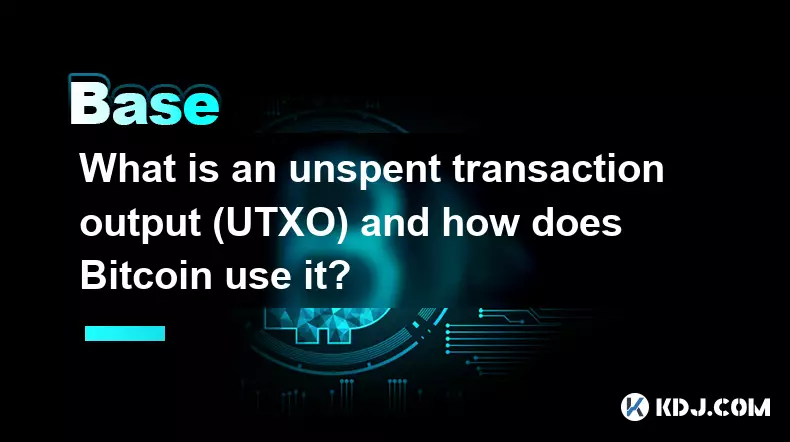-
 bitcoin
bitcoin $102182.982207 USD
-0.92% -
 ethereum
ethereum $3438.744518 USD
0.12% -
 tether
tether $0.999933 USD
0.02% -
 xrp
xrp $2.405093 USD
0.05% -
 bnb
bnb $956.306114 USD
-0.53% -
 solana
solana $153.028851 USD
-1.23% -
 usd-coin
usd-coin $0.999800 USD
-0.03% -
 tron
tron $0.294898 USD
-1.08% -
 dogecoin
dogecoin $0.171428 USD
-0.58% -
 cardano
cardano $0.551186 USD
-1.15% -
 hyperliquid
hyperliquid $38.755878 USD
0.04% -
 chainlink
chainlink $15.298460 USD
-0.05% -
 bitcoin-cash
bitcoin-cash $516.067428 USD
1.68% -
 stellar
stellar $0.280726 USD
-0.42% -
 zcash
zcash $518.919369 USD
18.01%
What is a Web3 domain name (like .eth) and how does it work?
Web3 domains like .eth replace complex crypto addresses with human-readable names, enabling seamless payments, decentralized websites, and universal digital identities.
Nov 11, 2025 at 05:39 pm

Understanding Web3 Domain Names
1. A Web3 domain name, such as .eth or .crypto, is a blockchain-based naming system that replaces complex cryptocurrency addresses with human-readable names. Unlike traditional DNS domains managed by centralized registrars, these domains are stored on decentralized ledgers like Ethereum. This ensures users maintain full ownership and control without interference from third parties.
2. Each Web3 domain acts as a digital identity across blockchain applications. Instead of sharing a long alphanumeric wallet address like 0x742d35Cc...98e, you can simply share alice.eth. The domain resolves this readable name directly to the associated wallet address through smart contracts.
3. These domains are non-fungible tokens (NFTs), typically built using standards like ERC-721. As NFTs, they can be bought, sold, or transferred on marketplaces just like other digital collectibles. Ownership is recorded permanently on the blockchain, making transfers transparent and secure.
4. Integration with decentralized applications (dApps) allows Web3 domains to serve multiple functions beyond payments. They can point to decentralized websites hosted on IPFS, store profile data, or authenticate logins across platforms without relying on passwords.
5. Providers like the Ethereum Name Service (ENS) and Unstoppable Domains manage different top-level domains. While ENS operates primarily on Ethereum and emphasizes decentralization and open governance, Unstoppable Domains offers cross-chain support and one-time purchase models.
How Blockchain Resolution Works
1. When a user types bob.crypto into a compatible wallet or browser, the system queries a smart contract responsible for that domain extension. This contract checks the registry to find which wallet address or content is linked to the name.
2. The resolution process relies on decentralized protocols rather than centralized servers. For example, ENS uses a hierarchical structure where the root domain is controlled by a public smart contract, and subdomains can be configured by their owners.
3. Users configure what their domain points to via a resolver contract. This includes setting cryptocurrency addresses, metadata, text records, or content hashes for decentralized websites. Changes are executed via blockchain transactions, ensuring tamper-proof updates.
4. Because resolution happens on-chain, it requires transaction fees in the native cryptocurrency (e.g., ETH for ENS). However, once set, lookups are free and instantaneous for end-users interacting with dApps or wallets that support the standard.
5. Compatibility depends on application support. Major crypto wallets like MetaMask and Brave Browser natively integrate ENS and similar services, enabling seamless interaction without additional plugins.
Use Cases Beyond Wallet Addresses
1. Decentralized websites can be hosted using IPFS or Arweave, with the domain pointing to a content hash. This enables censorship-resistant publishing, where site owners retain control without dependence on hosting providers.
2. Web3 domains streamline authentication. Some platforms allow users to log in using their .eth name instead of email and password, leveraging cryptographic signatures to verify identity securely.
3. They serve as universal profiles, aggregating social media links, verified credentials, avatar images, and even email addresses under a single name. This creates a portable digital identity usable across various services.
4. In DeFi and NFT marketplaces, domains simplify interactions. Instead of copying long addresses during token swaps or NFT transfers, users transact using familiar names, reducing errors and improving usability.
5. Enterprises and communities adopt Web3 domains for branding in virtual spaces. A company might register brand.eth to represent itself in metaverse environments, DAO governance portals, or customer-facing payment interfaces.
Frequently Asked Questions
Can I use a Web3 domain with any cryptocurrency?Yes, most Web3 domain services support multiple blockchains and cryptocurrencies. For instance, a single .eth domain can map to Bitcoin, Ethereum, Litecoin, and over 100 other chain addresses simultaneously.
Are Web3 domains subject to renewal fees?It depends on the provider. ENS charges an annual fee in ETH to maintain ownership, which helps prevent hoarding. Unstoppable Domains offers lifetime ownership after a one-time purchase, with no recurring costs.
What happens if I lose access to my Web3 domain?Since domains are tied to private keys, losing access to your wallet means losing control of the domain. There is no central authority to recover accounts, emphasizing the importance of secure key management.
Can I create subdomains under my Web3 domain?Yes, owners can create and manage unlimited subdomains. For example, if you own alice.eth, you can assign payments.alice.eth to your business wallet and blog.alice.eth to your personal blog, each pointing to different destinations.
Disclaimer:info@kdj.com
The information provided is not trading advice. kdj.com does not assume any responsibility for any investments made based on the information provided in this article. Cryptocurrencies are highly volatile and it is highly recommended that you invest with caution after thorough research!
If you believe that the content used on this website infringes your copyright, please contact us immediately (info@kdj.com) and we will delete it promptly.
- Milk Mocha Meme Coin Presale Frenzy: HUGS Steals Hearts and Crypto
- 2025-11-14 02:50:01
- Bitcoin Price, Whale Activity, and Rebound Prediction: Decoding the Crypto Market's Next Move
- 2025-11-14 02:50:02
- Token Listing Mania: Attention Turns to BANK, MET, and the Rise of Meme Coin Utility
- 2025-11-14 01:00:01
- ZEC, Zcash, and Winklevoss: A New Chapter for Privacy?
- 2025-11-14 01:50:01
- Pi Network's Web3 Gaming Ecosystem: A New Dawn or Just Hype?
- 2025-11-14 01:20:01
- Decoding the Crypto Buzz: From SocialFi to Meme Coins, What's Worth Watching?
- 2025-11-14 01:30:02
Related knowledge

What is the difference between a transparent and a shielded transaction?
Nov 10,2025 at 05:59pm
Understanding Transparent Transactions in Cryptocurrency1. Transparent transactions are the standard form of transaction on most public blockchains li...

What is a "crypto airdrop farmer" and what strategies do they use?
Nov 09,2025 at 03:39pm
What Is a Crypto Airdrop Farmer?1. A crypto airdrop farmer is an individual who actively participates in blockchain projects to qualify for free token...

What is an unspent transaction output (UTXO) and how does Bitcoin use it?
Nov 12,2025 at 01:40am
Understanding the Concept of Unspent Transaction Output (UTXO)1. An Unspent Transaction Output, commonly referred to as UTXO, is a fundamental compone...

How do you track a crypto portfolio across multiple wallets and chains?
Nov 12,2025 at 04:19pm
The Evolution of Decentralized Exchanges in the Crypto Ecosystem1. Decentralized exchanges (DEXs) have transformed how users trade digital assets by r...

How does a crypto insurance protocol work?
Nov 08,2025 at 12:39am
Understanding Crypto Insurance Protocols1. A crypto insurance protocol operates by offering financial protection against losses incurred from digital ...

What is token composability and why is it called "DeFi Legos"?
Nov 09,2025 at 06:39am
Bitcoin's Role in Decentralized Finance1. Bitcoin remains the cornerstone of decentralized finance, serving as a benchmark for value and trustlessness...

What is the difference between a transparent and a shielded transaction?
Nov 10,2025 at 05:59pm
Understanding Transparent Transactions in Cryptocurrency1. Transparent transactions are the standard form of transaction on most public blockchains li...

What is a "crypto airdrop farmer" and what strategies do they use?
Nov 09,2025 at 03:39pm
What Is a Crypto Airdrop Farmer?1. A crypto airdrop farmer is an individual who actively participates in blockchain projects to qualify for free token...

What is an unspent transaction output (UTXO) and how does Bitcoin use it?
Nov 12,2025 at 01:40am
Understanding the Concept of Unspent Transaction Output (UTXO)1. An Unspent Transaction Output, commonly referred to as UTXO, is a fundamental compone...

How do you track a crypto portfolio across multiple wallets and chains?
Nov 12,2025 at 04:19pm
The Evolution of Decentralized Exchanges in the Crypto Ecosystem1. Decentralized exchanges (DEXs) have transformed how users trade digital assets by r...

How does a crypto insurance protocol work?
Nov 08,2025 at 12:39am
Understanding Crypto Insurance Protocols1. A crypto insurance protocol operates by offering financial protection against losses incurred from digital ...

What is token composability and why is it called "DeFi Legos"?
Nov 09,2025 at 06:39am
Bitcoin's Role in Decentralized Finance1. Bitcoin remains the cornerstone of decentralized finance, serving as a benchmark for value and trustlessness...
See all articles










































































